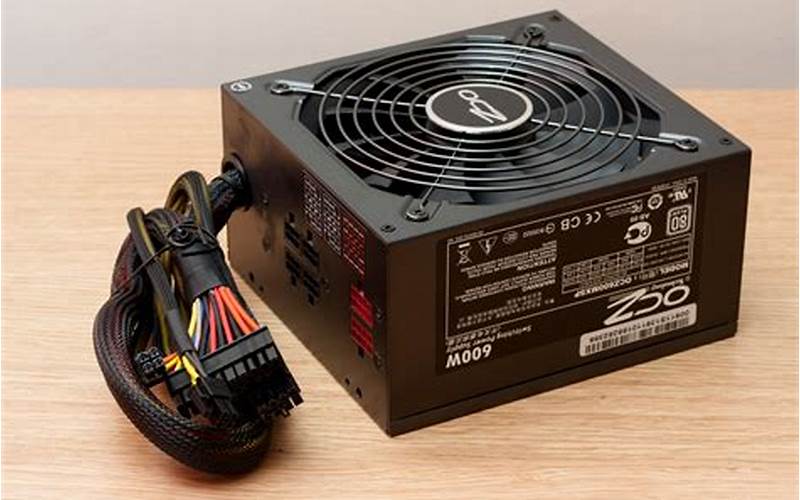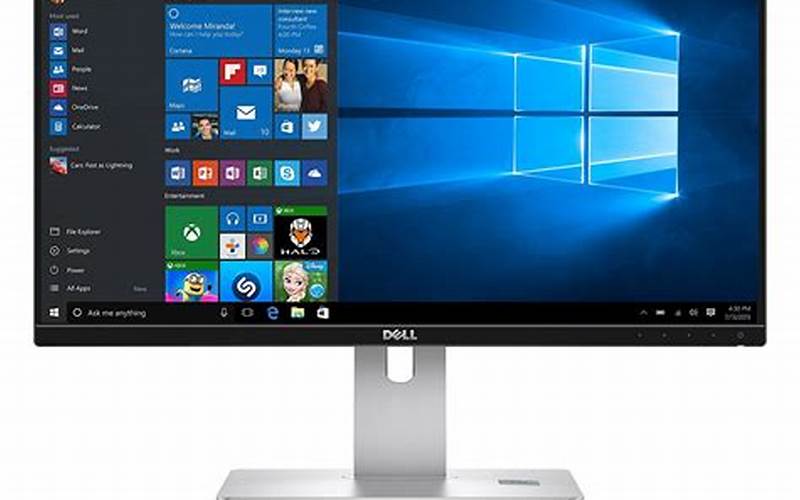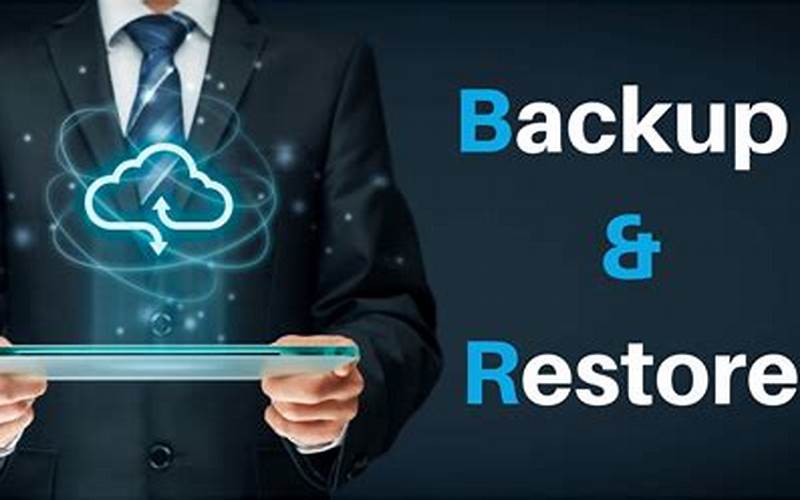Introduction
 Source: tse1.mm.bing.net
Source: tse1.mm.bing.netSetting up a computer can be an overwhelming task, especially if you're new to the world of technology. However, with the right guidance and a little patience, anyone can successfully set up their computer. In this comprehensive guide, we will walk you through the process of setting up your computer step by step. Whether you have just purchased a new computer or are reinstalling your operating system, this guide will assist you in getting your computer up and running smoothly.
1. Unboxing Your Computer
 Source: tse1.mm.bing.net
Source: tse1.mm.bing.netThe first step in setting up your computer is unboxing it. Carefully remove the computer from its packaging, ensuring that you don't damage any delicate components. Keep the packaging and any included accessories in a safe place in case you need them later.
2. Connecting the Power Supply
 Source: tse1.mm.bing.net
Source: tse1.mm.bing.netOnce your computer is unboxed, locate the power supply and connect it to a power outlet. Make sure the power outlet is grounded and easily accessible. It is also important to check that the voltage of the power supply matches the voltage of your region. This information can usually be found on the power supply itself or in the user manual.
3. Connecting the Monitor
 Source: tse1.mm.bing.net
Source: tse1.mm.bing.netNext, connect your computer monitor to your computer. Most monitors use HDMI or DisplayPort cables, but older models may require VGA or DVI cables. Ensure that the cable is securely connected to both the monitor and the computer. If your monitor has multiple input options, make sure you select the correct input source using the monitor's menu.
4. Connecting the Keyboard and Mouse
 Source: tse1.mm.bing.net
Source: tse1.mm.bing.netTo interact with your computer, you'll need to connect a keyboard and mouse. Most keyboards and mice connect via USB, so locate the USB ports on your computer and plug in the respective devices. If you have a wireless keyboard and mouse, follow the manufacturer's instructions to connect them to your computer.
5. Connecting Speakers or Headphones
 Source: tse1.mm.bing.net
Source: tse1.mm.bing.netIf you want to listen to audio from your computer, connect speakers or headphones to the appropriate audio output. Many computers have built-in speakers, but external speakers or headphones often provide better sound quality. Simply plug them into the audio output port, usually labeled with a headphone icon.
6. Connecting to the Internet
 Source: tse1.mm.bing.net
Source: tse1.mm.bing.netTo access the vast resources of the internet, you'll need to connect your computer to the internet. If you have a wired connection, connect one end of an Ethernet cable to your computer's Ethernet port and the other end to your modem or router. For wireless connections, locate the Wi-Fi icon on your computer and follow the prompts to connect to your network.
7. Turning on Your Computer
 Source: tse1.mm.bing.net
Source: tse1.mm.bing.netWith all the necessary connections made, it's finally time to turn on your computer. Locate the power button, usually located on the front or top of the computer case, and press it. Your computer will begin to boot up, and you'll soon see the manufacturer's logo or the start of the operating system installation process.
8. Installing the Operating System
 Source: tse1.mm.bing.net
Source: tse1.mm.bing.netIf your computer does not come pre-installed with an operating system, you'll need to install one. Insert the operating system installation disc or USB drive into your computer and follow the on-screen instructions. Make sure to select the correct language, keyboard layout, and other preferences during the installation process.
9. Setting Up User Accounts
 Source: tse1.mm.bing.net
Source: tse1.mm.bing.netOnce the operating system is installed, you'll need to set up a user account. This account will serve as your primary login and provide access to your personal files and settings. Follow the prompts to create a username and password, and consider setting up additional user accounts for other individuals who will be using the computer.
10. Installing Drivers and Updates
 Source: tse1.mm.bing.net
Source: tse1.mm.bing.netAfter setting up user accounts, it's essential to install the necessary drivers for your computer's hardware. Drivers enable your computer to communicate with its various components, such as the graphics card, sound card, and network adapter. Check the manufacturer's website for the latest drivers and install them accordingly. Additionally, install any available operating system updates to ensure your computer is secure and up to date.
11. Configuring Antivirus Software
 Source: tse1.mm.bing.net
Source: tse1.mm.bing.netTo protect your computer from malware and other security threats, it is crucial to install and configure antivirus software. Choose a reputable antivirus program and follow the installation instructions provided. Once installed, update the antivirus software and schedule regular scans to keep your computer safe from potential threats.
12. Personalizing Your Computer
 Source: tse1.mm.bing.net
Source: tse1.mm.bing.netNow that the essential setup is complete, it's time to personalize your computer. Customize your desktop background, screensaver, and other visual settings to reflect your preferences. You can also install additional software and applications that suit your needs, such as productivity tools, photo editing software, or games.
13. Configuring Backup and Recovery
 Source: tse1.mm.bing.net
Source: tse1.mm.bing.netTo protect your important files and data, it's crucial to set up a backup and recovery system. Consider using cloud storage services, external hard drives, or dedicated backup software to regularly back up your files. Familiarize yourself with the recovery options available on your computer to ensure you can restore your system if necessary.
14. Connecting Printers and Other Peripherals
 Source: tse1.mm.bing.net
Source: tse1.mm.bing.netIf you have additional peripherals, such as printers, scanners, or external storage devices, you'll need to connect them to your computer. Follow the manufacturer's instructions for each device and ensure that the appropriate drivers are installed. Test the peripherals to verify that they are working correctly.
15. Adjusting Power and Sleep Settings
 Source: tse1.mm.bing.net
Source: tse1.mm.bing.netTo optimize energy usage and extend the lifespan of your computer, adjust the power and sleep settings. Access the power settings in the control panel or system preferences and configure them according to your preferences. Consider enabling sleep mode or hibernation when your computer is inactive for an extended period.
16. Troubleshooting Common Issues
 Source: tse1.mm.bing.net
Source: tse1.mm.bing.netDespite careful setup, you may encounter common issues while using your computer. Troubleshooting is an essential skill to resolve these problems effectively. Familiarize yourself with basic troubleshooting techniques, such as restarting the computer, checking cable connections, and updating drivers. Online forums and manufacturer support websites can also provide valuable assistance when troubleshooting.
Conclusion
Setting up a computer may seem daunting at first, but with the right guidance, it can be a straightforward process. By following the steps outlined in this guide, you can successfully set up your computer and have it ready for use. Remember to take your time, read instructions carefully, and seek assistance when needed. With a properly set up computer, you can explore the endless possibilities of technology and enjoy a seamless computing experience.
Post a Comment for "How to Setup a Computer: A Comprehensive Guide"